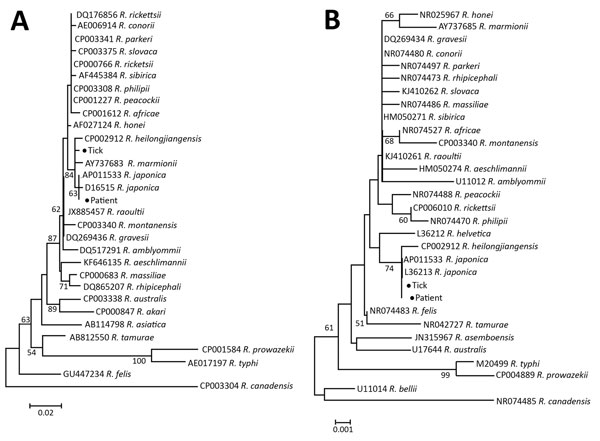Volume 24, Number 11—November 2018
Research Letter
Japanese Spotted Fever in Eastern China, 2013
Figure

Figure. Phylogenetic analysis of Rickettsia isolate from patient with Japanese spotted fever in Anhui Province and isolate from Haemaphysalis longicornis tick in Shandong Province, China, 2013 (black dots), compared with reference isolates. Unrooted neighbor-joining trees of 16S rRNA gene (A) and 17-kDa protein gene (B) were constructed by using MEGA 5.2 (https://www.megasoftware.net/) and 1,000 bootstrap replications. Scale bar represents substitutions per nucleotide.
1These authors contributed equally to this article.
Page created: October 16, 2018
Page updated: October 16, 2018
Page reviewed: October 16, 2018
The conclusions, findings, and opinions expressed by authors contributing to this journal do not necessarily reflect the official position of the U.S. Department of Health and Human Services, the Public Health Service, the Centers for Disease Control and Prevention, or the authors' affiliated institutions. Use of trade names is for identification only and does not imply endorsement by any of the groups named above.